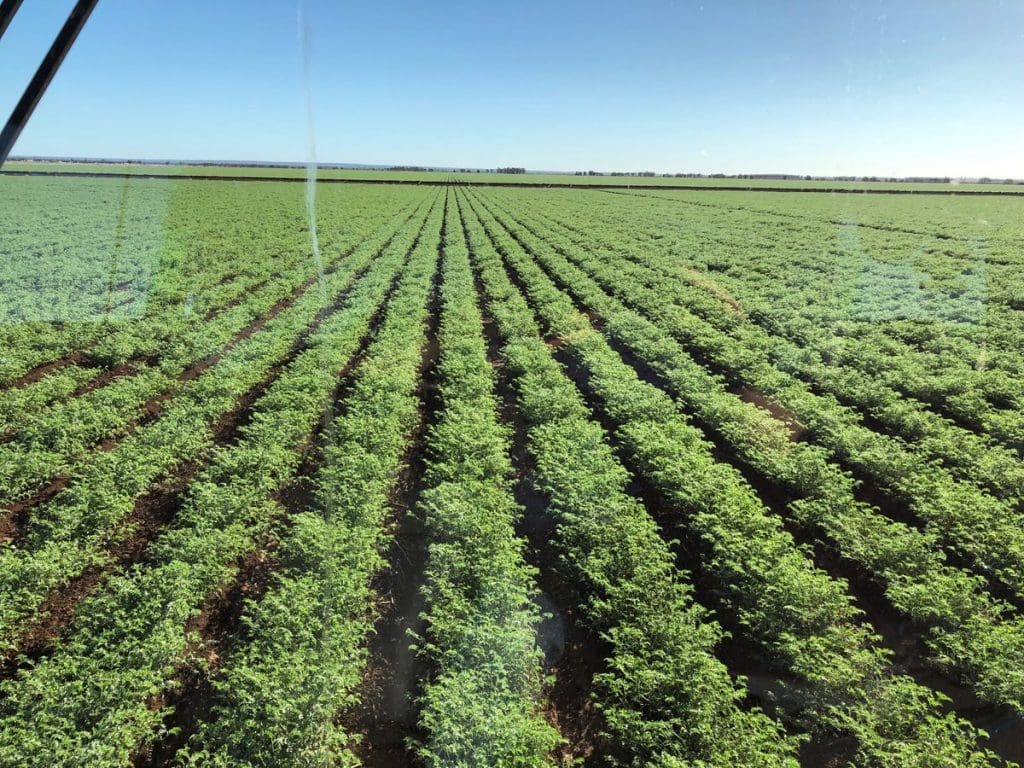GROWING adoption of chickpeas in broadacre cropping rotations has prompted a re-evaluation of aerated subsurface drip irrigation, with a new data analysis showing it can boost yields by up to 27 per cent.
While sub-surface drip irrigation has previously been considered too expensive to be a viable option for inclusion in many Australian production systems, higher yields and booming global demand for plant-based protein may change the economic equation.
 By 2050, global demand for protein from pulse crops, like chickpeas, is predicted to rise by 30pc – or 289 million tonnes – prompting agronomists to revisit earlier evaluations of methods, such as sub-surface irrigation, as a means of boosting production.
By 2050, global demand for protein from pulse crops, like chickpeas, is predicted to rise by 30pc – or 289 million tonnes – prompting agronomists to revisit earlier evaluations of methods, such as sub-surface irrigation, as a means of boosting production.
CQ University and Queensland Department of Agriculture and Fisheries (DAF) researchers have analysed data gathered during a 2006-07 crop trial, revealing that those areas irrigated with aerated sub-surface drip irrigation (oxygation) had yields between 10pc and 27pc higher than conventionally irrigated plots.
“These results provide evidence that oxygation has the potential to contribute to increased chickpea yield and water-use efficiencies on a broadacre irrigated scale,” the research findings state.
“The increased yield and improvement in water-use efficiency could improve the profitability of cotton-chickpea farming systems.”
The key difference was the ability of sub-surface irrigation systems to add oxygen to the soil, to help chickpeas overcome their susceptibility to waterlogging.
“Chickpea is particularly susceptible to waterlogging and consequently requires great care of root zone aeration at crucial stages of plant development, e.g. flowering, to avoid incurring yield penalties through inappropriate irrigation management that saturate the rhizosphere,” the researchers reported.
“Use of aerated water irrigation to overcome hypoxia (lack of oxygen) in the rhizosphere was therefore evaluated.”
The trial data was gathered at a property near Emerald, Central Queensland, with self-mulching, black vertisol soils, and sown to the chickpea variety Moti Desi.
The oxygated trial plots yielded between 2.05 and 3.24 tonnes per hectare compared to the long-term national average of just 1.13t/ha.
“These results were consistent with those for cotton on the same site, providing further justification for the capital investment required for oxygated subsurface drip irrigation systems,” the report states.
And with chickpea becoming an increasingly important part of crop rotations – national chickpea production has been expanding at a rate of 21,000ha per year since 2000 – the researchers recommended industry now undertake a full cost:benefit analysis to re-evaluate the economics of incorporating subsurface drip irrigation into cropping systems, in order to provide growers with clear guidance for adoption of the practice.
Source: CQ University
The trial results were detailed in a research paper published in scientific journal, Agricultural Water Management, by DAF’s Dr Lance Pendergast and CQUniversity’s Associate Professor Surya Bhattarai and Adjunct Professor David Midmore.



HAVE YOUR SAY